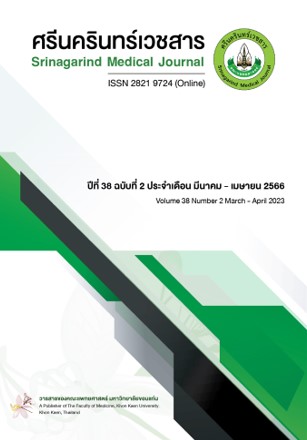Evaluation of the Iterative Metal Artifact Reduction (iMAR) Algorithm and an Extended CT Number Scale on Dosimetry of Head and Neck VMAT Treatment Planning (Phantom Study)
Evaluation of the iterative metal artifact reduction (iMAR) algorithm and an extended CT number scale on dosimetry of head and neck VMAT treatment planning (phantom study)
Keywords:
artifact, extended CT scale, iMAR algorithmAbstract
Background and Objective: Artifacts caused by amalgam in CT (Computed Tomography) images induce incorrect CT number reconstructions and inaccurate dosimetric calculations of volumetric modulated arc therapy (VMAT) plans for head and neck (H&N) cancers. This study aimed to evaluate the potential of artifact correction using iterative metal artifact reduction (iMAR) algorithm and extended CT scale in CT simulator and extended CT calibration curve in treatment planning system (TPS).
Methods: Created and extended the CT calibration curve in TPS then evaluated the efficiency of iMAR and extended CT scale for CT number corrections and evaluated the efficiency of iMAR and extended CT scale combined with extended CT calibration curve for dosimetric acuracy of VMAT calculations, respectively. The VMAT plans for H&N cancers which contained artifacts and treated in Maharat Nakhon Ratchasima Hospital during October 2021 to March 2022 (n = 11) were studied retrospectively. The locations of amalgam, targets and calculation methods of each patient were duplicated to phantom and studied in June to September 2022.
Results: The errors of CT number representations of tissue in artifacts were improved only by iMAR applications whereas of metallic materials were improved only by extended CT scale applications. All of calculated VMAT plans in phantom passed criteria of Portal Dosimetry system (3%, 3 mm). There was no significant dosimetric difference between thermoluminescent dosimeter (TLD) measurements and TPS calculations (p = 0.129).
Conclusion: The CT number discrepancies in artifacts are corrected by iMAR whereas of metallic materials are corrected by extended CT scale. Therefore the images which contained metal artifacts should be corrected by both iMAR and extended CT scale applications in CT simulator also with extension of CT calibration curve in TPS to improve the dosimetric accuracy of VMAT plans for H&N cancers.
References
Lin CI, Feng Y, Jiang W, Huang Z. Quantification of dosimetric effects of dental metallic implant on volumetric-modulated arc therapy plans. Int J Cancer Clin Res 2018;5:092. doi:10.23937/2378-3419/1410092. https://doi.org/10.23937/2378-3419/1410092
Çatli S. High-density dental implants and radiotherapy planning: evaluation of effects on dose distribution using pencil beam convolution algorithm and Monte Carlo method. J Appl Clin Med Phys 2015;16(5):46-52. https://doi.org/10.1120/jacmp.v16i5.5612
Bär E, Schwahofer A, Kuchenbecker S, Häring P. Improving radiotherapy planning in patients with metallic implants using the iterative metal artifact reduction (iMAR) algorithm. Biomed Phys Eng Express 2015;1:025206. doi: 10.1088/2057-1976/1/2/025206.
https://doi.org/10.1088/2057-1976/1/2/025206
Li H, Noel C, Chen H, Li HH, Low D, Moore K, et al. Clinical evaluation of a commercial orthopedic metal artifact reduction tool for CT simulations in radiation therapy. Med Phys 2012;39(12):7507-17. https://doi.org/10.1118/1.4762814
Huang VW, Kohli K. Evaluation of new commercially available metal artifact reduction (MAR) algorithm on both image quality and relative dosimetry for patients with hip prosthesis or dental fillings. Int J Med Phys 2017;6:124-38. https://doi.org/10.4236/ijmpcero.2017.62012
Aziz MZA, Yusoff AL, Osman ND, Abdullah R, Rabaie NA, Salikin MS. Monte Carlo dose calculation in dental amalgam phantom. J Med Phys 2015;40(3):150-5.
https://doi.org/10.4103/0971-6203.165080
Emberru M. Assessment of a treatment planning protocol for the reduction of dosimetry calculation errors in radiotherapy for head and neck patients with dental implants [dissertation]. Ontario: McMaster University; 2021.
Mail N, Albarakati Y, Khan MA, Saeedi F, Safadi N, Al-Ghamdi S, Saoudi A. Dosimetric consideration for patients with dental filling materials undergoing irradiation of oral cavity using RapidArc™: challenges and solution. Proc SPIE 2012;8313:831344.
Downloads
Published
How to Cite
Issue
Section
License
Copyright (c) 2023 Srinagarind Medical Journal

This work is licensed under a Creative Commons Attribution-NonCommercial-NoDerivatives 4.0 International License.




